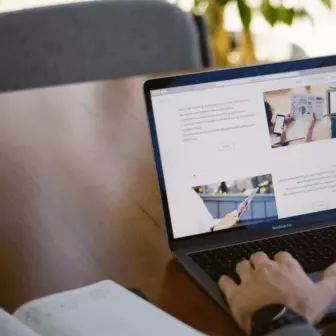Empires can be built with the help of vision and self-belief, says Radhika Roy, who is the co-founder and managing director of one of the leading news media in India, NDTV. It may sound very simple but the journey to becoming a great leader is an arduous task. Collective growth and success are what leadership is all about.

Leading a global team is even tougher as it demands extreme leadership. If you can lead a global team, then you can rest assured that you can lead any team. To make a team work in the office is a formidable task as things may go wrong, priorities may alter, or miscommunication and misunderstanding may creep in. But when you can’t see your colleagues; or when you and your team members are working in different countries (which brings the factor of different time zones, language and culture); or when you have to influence decisions and decision makers whom you may not have met; or when you can’t do a quick a 2-minute discussion in the corridor; or when you are not able to indulge in the daily banter of the office which lets you know who is doing what and what’s on their mind, then making a team work is much more difficult.
If you can lead a global team, then you can rest assured that you can lead any team
You are on your own when you have to lead a global team. There are certain things that you need to know while leading global teams effectively:
Technology
Leveraging technology gives a push to more divergent thinking, brainstorming and decision actions. Some of the efficient teams can actually utilise technology to draw on the unique insights of particular team members. For instance, an introvert guy is more likely to add his viewpoint in online forums. So, technology utilisation assists in moderating the impact of personality factors, mask status differences, disseminate participation opportunities and puts emphasis on message rather than the messenger.
Structure
Being more structured and proactive is necessary while handling global teams. There has to be a system in place for promoting efficacious performance habits like kicking off an interaction to talk about what a great outcome would look like or scheduling what task will be done by who and by when, or incorporating vibrant efforts by being a hub of activity.
Speed
For addressing language and cultural differences, you must try to help your team members to take some time to get to know each other more. You can set up group norms during formation or project build initiation phase. For instance, you can use paraphrases to assist the listeners to understand what is being said or not being said.
Role
A leader has to set roles for their team members in order to avoid diffusion of job responsibilities. This is because dearth of accountability can be troublesome while working with global teams. So, building a role charter helps.
Relationship
Global teams hardly get any time to engage in social conversations that happen naturally when the teams are having a face-to-face working relationship. This can prevent the development of wonderful team relationships. So, adhering to simple measures like sending a birthday card, personalising conversations or identifying and recognising a marvellous contribution by a team member can help enhance the visibility of persons and develop team cohesion.
Adapt
Allowing the team members to adapt to your way of working is necessary. For example, you can co-locate your new members with a senior member of the team so that they can adapt to your working environment.
Natural
You should encourage your team members to unmute calls so that the natural flow of conversation can take place. This calls for jokes and shared laughter thereby promoting team morale and cohesion. For instance, the sound of a dog barking in the background helps you to recognise that you are actually talking to a person and not a machine and the person on the phone call might be joining the call at an odd hour or wearing night clothes.
Video
Video calls are also helpful as they can help leaders and team members can pick up on non-verbal cues. For instance, if someone is trying to give an input or is in favour or against what is being discussed, it can be picked.
Trust
It is essential to make sure that the conversations are happening in the presence of all the team members so that no one is kept out of the loop and the trust is kept intact.
Regulation
Leaders are required to regulate how many members are being added to their globally distributed team as large teams can also have to encounter the problems of accountability.
Conclusion
Globally distributed team comes with a number of merits. It gives you an opportunity to acquire a global pool of talent and make the best use of diverse experiences and viewpoints. It can also pose logistical, technical and socio-emotional issues. It is important that the leader of a global team understands these problems and acts proactively.
Subscribe
Related Blogs
Why should you prioritize lean digital in your company?

We are living in an era where the change and innovation rate is just so high. If you want your organization to reach new…
How to measure your open source program’s success?

Along with active participation, it is very important to look after the ROI of open-source projects, programs, and…
Understanding the significance of participating in open-source communities

Do you think contributing to the open source community can be difficult? I don’t think so. Do you have to be employed by a…



